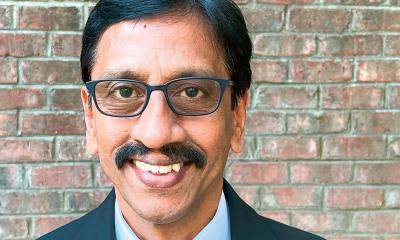Mobility is vital for patients and machines
Mobility – a patient’s ability to move, as well as the availability of transportable medical devices for diagnoses and treatments – saves time as well as hospital costs. As Anja Behringer reports, much is happening right at the patient’s bedside
New technological opportunities make it continuously easier to use medical devices anywhere, for in- and out-patient care. The technology has become mobile – and so have the patients. In-patient monitoring can be carried out wirelessly, independent of a patient’s respective location.


Radiology results can be accessed and evaluated on mobile devices in a patient’s immediate vicinity. We discussed the question of mobility with Dr Michael Meyer, Vice President for Health Policy and Vice President of the National Account Management division at Siemens. In this role, he is the health-political representative for the healthcare segment of this medical devices firm in Germany.
In Dr Meyer’s opinion, the most important medical devices are those for the entire imaging sector, radiology and MRI as well as laboratory diagnostics. ‘The latest development here is the worldwide unique sliding gantry CT scanner, recently installed at the University Hospital at the J.W. Goethe-University in Frankfurt.’
Weighing around 2.3 tons, this CT scanner slides between a routine examination room and emergency treatment room on a rail system. Thanks to this entirely novel installation, patients need not be moved and repositioned thus saving vital time during emergency treatment and significantly lowering the risk of additional injuries. Unlike similar, existing systems, the rails used in Frankfurt can cope with contamination and any other factors and are therefore suitable for use in emergency situations.
The system was developed and completely newly installed at the University Hospital in partnership with Siemens and, following completion of a test phase, will now be routinely used for treatment. Due to the development partnership, the cost fell between €600,000 and €700,00, while the hospital would normally have had to spend €1 million for this advanced technology.
What does Dr Meyer consider the most important development in relation to the slogan Medical Devices on the Move? ‘Diagnostics, with its new reagents, enabling point-of-care diagnosis. However, central laboratories will continue to exist alongside the technology which delivers results by the patient’s bedside. This mix is a challenge, but also is the future.’
There is a lot happening in this sector. The objective is clear: Cost savings which, as always, must be achieved through savings in personnel and time, with more effective devices. The patient, as always, is at the centre of developments, but now as a more active partner.
Mobile medical devices also play an increasingly important part beyond the hospital, i.e. in out-patient or cross-sector care. Implants fitted in hospital can be monitored in a patient’s home via telemetrics in the context of aftercare. Wound or diabetes management are further examples in which medical devices, together with IT, are used independent of location.
However, the increasing mobility of devices has a strong impact on tried and tested processes in medical care. To ensure that the new CT scanner in Frankfurt remains economical, between 20 and 25 patients a day should be examined.
Therefore the University Hospital team changed their entire shock room management, carrying out tests using a manikin to optimise the constellation. All devices, and doctors and nurses now have their pre-determined places in the shock room. When the new system is installed in other hospitals their trauma teams will be able to benefit from training at the University Hospital Frankfurt.
Asked about pan-European differences in the development and use of medical devices, Dr Meyer said: ‘The paradigm shift to point-of-care diagnostics is being tackled more flexibly and easily in other countries because there is more willingness to experiment. Southern European countries are further ahead than the Germans.’
Profile:
At the Siemens AG Healthcare Sector in Germany, Michael Meyer Dipl.-Kfm. Dr. rer. pol. is Vice President of Health Policy and Vice President of National Account Management. After gaining his degreee and doctorate at the University of Hamburg, in 1984 he worked as a trainer and consultant in international consultancy firms. From 1997 he developed a professional services business with a focus on customer relations management. Up to 2004 he was also responsible for global strategic planning in the enterprise networks sector and then in charge of worldwide strategic alliance management, as well as the vertical solutions business, Siemens AG activities in the introduction of electronic health cards and the operational side of the business for Siemens Medical Global Solutions in Germany where, since 2010, he has also been responsible for the clinical products business as well as business development.
18.11.2013
- CT (604)
- emergency medicine (313)
- imaging (1629)
- markets (545)
- medical technology (1544)
- mobility (70)
- radiology (725)











